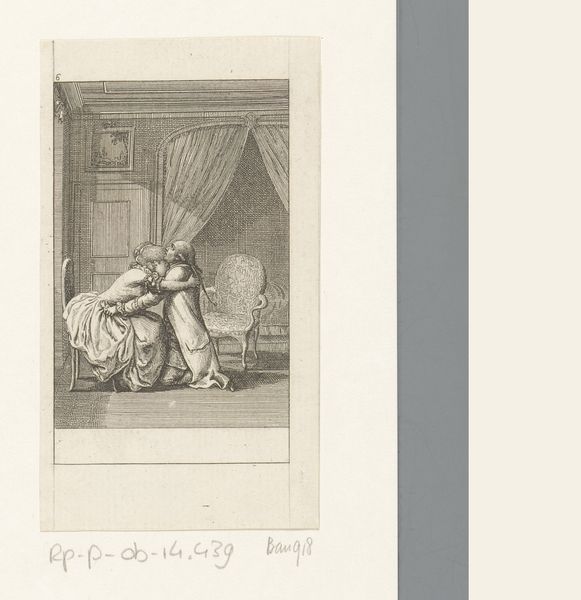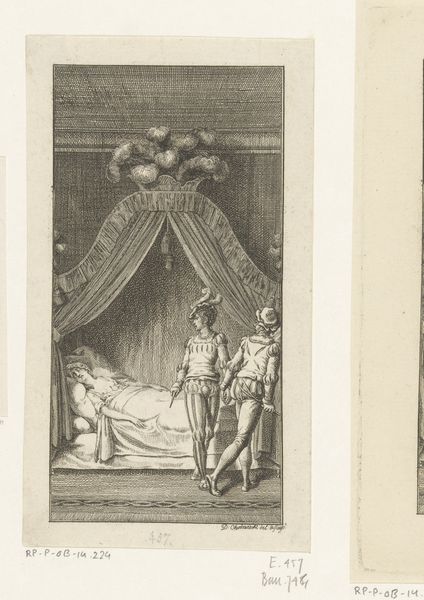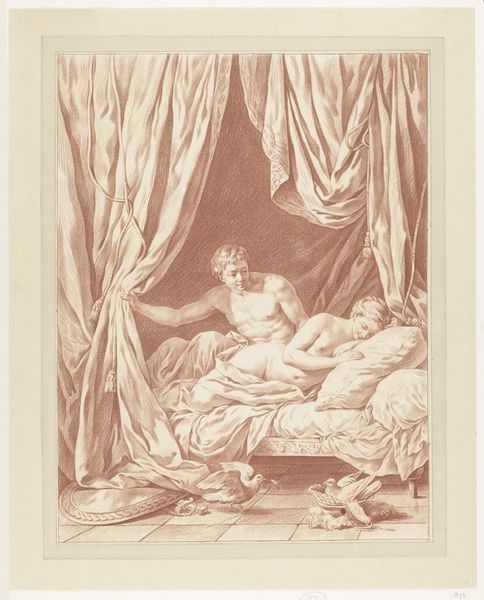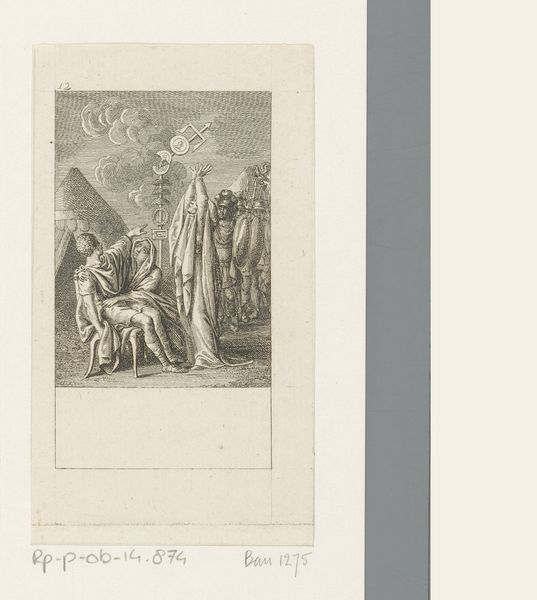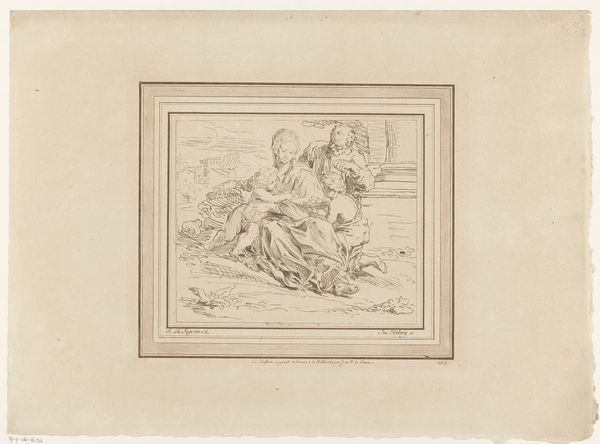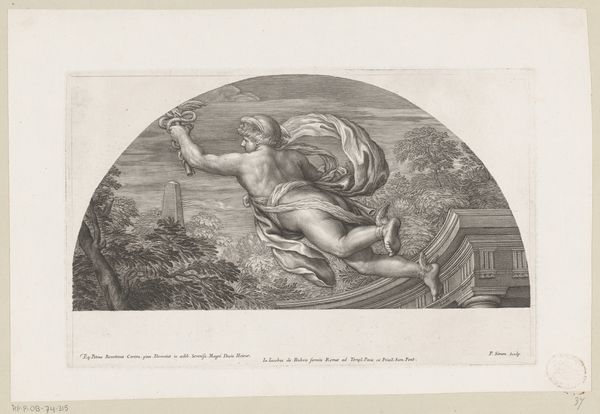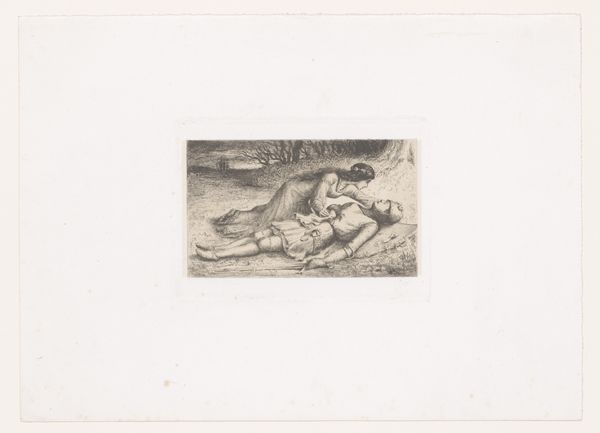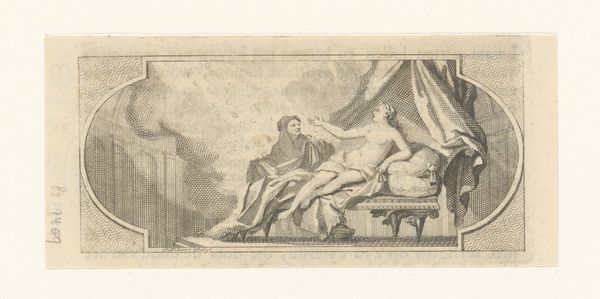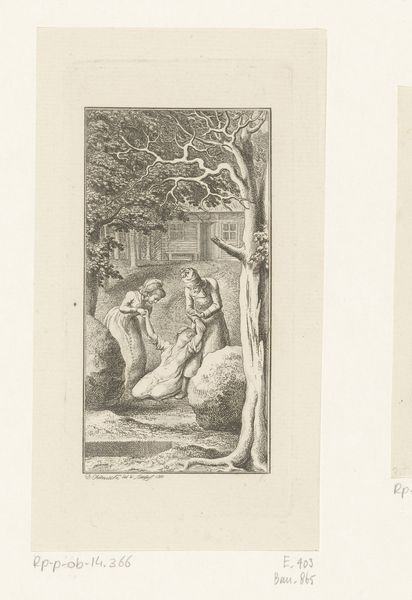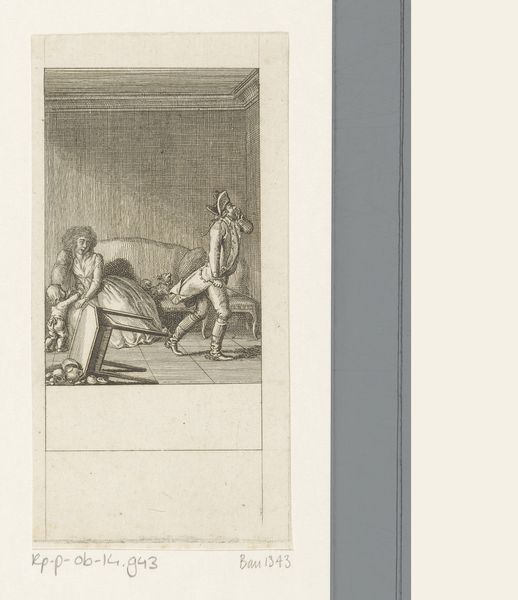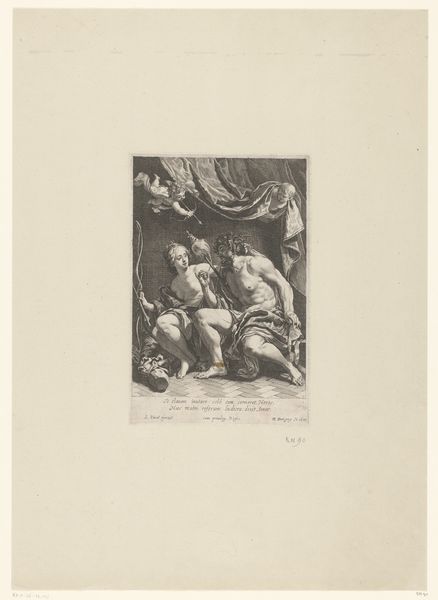
Dimensions: height 102 mm, width 64 mm
Copyright: Rijks Museum: Open Domain
Editor: So, this is "Kronos trekt een doek opzij" or "Kronos Pulling Aside a Curtain" by Daniel Nikolaus Chodowiecki, made in 1780. It's an engraving. I find the reclining figure striking – he seems to be unveiling something, but to what end? What do you make of the imagery in this print? Curator: Immediately, the figure of Kronos, Father Time, commands our attention. Notice how he pulls back the curtain. What is being revealed, or perhaps concealed? This action carries immense symbolic weight. The curtain itself becomes a potent symbol. Does it represent the past, something to be forgotten or something that needs to be unveiled? The artist uses the imagery of classical antiquity as an exploration into psychological revelation, maybe the fears and uncertainties tied to what the future holds. Editor: I see. So, the act of unveiling isn’t just about showing; it’s about the psychological implications of what’s revealed. Is that also related to the cherubs floating nearby? Curator: Precisely! The cherubs represent fleeting moments, a sense of lightness of youth juxtaposed with Kronos’s imposing figure, so we can infer he has the gravity of history itself. Think of them not just as decorative elements but as visual metaphors for the passage of time and how different stages of existence perceive life, loss, history, and truth. Can cultural memory alter perceptions, and who is in charge of that unveiling and why? Editor: It’s interesting how symbols from classical mythology continue to resonate. I had never thought of them with such psychological depth. Curator: Chodowiecki invites us to contemplate time, not just as a linear progression, but as an unveiling of inner realities that have become entrenched within our cultural memories. Thank you, you made me look closer, too!
Comments
No comments
Be the first to comment and join the conversation on the ultimate creative platform.
